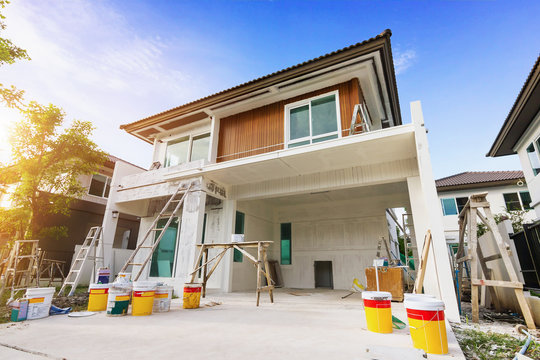🌦️ How Northern Colorado Weather Impacts Paint Lifespan

Living in Northern Colorado means enjoying 300 days of sunshine ☀️, stunning mountain views 🏔️, and… some of the most unpredictable weather in the country. From freezing winters to dry, windy summers, our climate can take a toll on your home’s exterior paint.
If you’ve ever wondered why your paint doesn’t seem to last as long here as it might in other places, you’re not alone. Let’s break down how Fort Collins, Loveland, Windsor, Timnath, and surrounding areas’ unique weather patterns affect paint lifespan and what you can do to protect your investment.
❄️ 1. Cold Winters and Freeze-Thaw Cycles
Northern Colorado winters bring frequent temperature swings. One day it’s sunny and 55°, the next it’s below freezing. When moisture seeps into small cracks in paint and then freezes, it expands causing peeling, chipping, and cracking over time.
What You Can Do:
- Use high-quality, flexible exterior paint that can handle expansion and contraction.
- Schedule painting projects in spring or fall when temperatures are mild and stable.
- Inspect and touch up problem areas yearly before winter hits.
🌬️ 2. Dry Air and Strong Winds
The dry air of the Front Range is notorious. While it’s great for low humidity, it’s tough on paint. Paint can dry too quickly during application, preventing proper adhesion. Add in Northern Colorado’s gusty winds 💨, and you’ve got dust, debris, and UV rays wearing down your paint prematurely.
What You Can Do:
- Avoid painting on windy days, wind can cause uneven drying and dust contamination.
- Choose premium paint formulas designed for dry, high-altitude climates.
- Apply paint in the morning or evening to avoid peak sun and wind hours.
☀️ 3. Intense UV Exposure
At Colorado’s elevation, UV rays are stronger and more damaging. Over time, that sunlight fades vibrant colors and breaks down paint resins, causing chalking and surface deterioration.
What You Can Do:
- Opt for UV-resistant paints with built-in fade protection.
- Consider lighter shades they reflect sunlight better and resist fading.
- Repaint every 7–10 years (or sooner, depending on exposure).
🌧️ 4. Occasional Hail and Heavy Rain
Though hailstorms are short-lived, they can cause long-term damage. Paint chips and micro cracks from hail impact allow water to seep underneath, accelerating wear. Similarly, heavy rains followed by fast drying can cause paint to blister if not properly applied.
What You Can Do:
- Repair hail damage quickly to prevent moisture intrusion.
- Make sure your painter preps surfaces properly clean, dry, and primed before painting.
- Use high-quality exterior caulks around windows and trim for extra moisture protection.
🏡 5. Choosing the Right Paint for Northern Colorado
The best protection starts with the right products and proper application. At Horner Painting, we use top-grade paint from Sherwin-Williams that are formulated for Colorado’s climate.
Our crews understand local conditions and adjust painting schedules and techniques accordingly so your home looks beautiful and stays protected year after year.
🌤️ In Summary
Northern Colorado’s weather is beautiful but tough on paint. Between harsh UV rays, cold winters, and dry winds, even the best paint jobs need proper care and planning.
By choosing the right materials, timing, and experienced painters, you can extend your paint’s lifespan and keep your home looking fresh, vibrant, and protected for years to come.
John Santos
